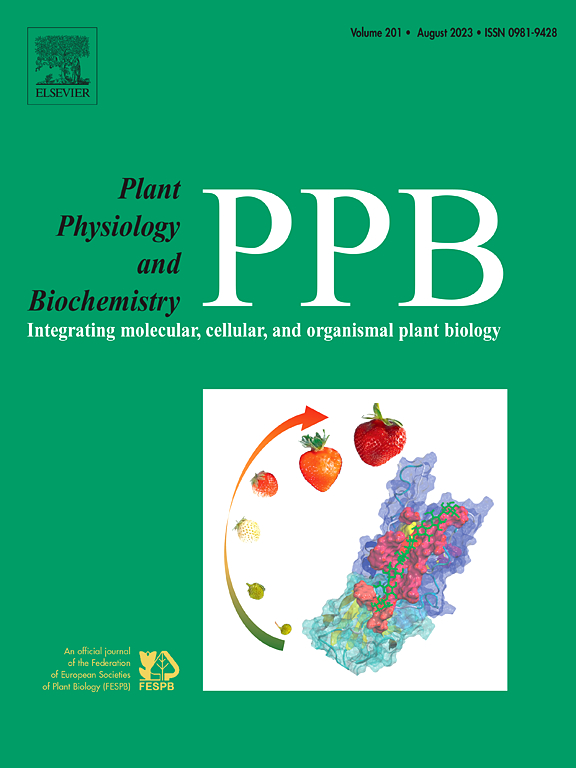Unlocking tea's potential: The synergistic role of selenium and phosphorus in enhancing tea quality
IF 6.1
2区 生物学
Q1 PLANT SCIENCES
引用次数: 0
Abstract
Selenium (Se) deficiency is harmful for human health, and producing Se-enriched tea is an effective way to supplement Se. This study systematically analyzed the effects of Se-phosphorus (P) interaction on the absorption and transport of Se and the physiological and biochemical indicators of tea plants. The Se was applied in the form of sodium selenite at three concentrations (0, 50, 100 μmol L−1), and P was applied as sodium dihydrogen phosphate at three concentrations (0.5, 1.5, and 10.5 mmol L−1). At the same Se concentrations (50.00 μmol L−1, 500.00 μmol L−1), P application could increase the Se content in roots (p < 0.05), while the Se transport coefficient decreased with increasing P concentrations. Gene expression analysis suggested that CsPht1;2a and CsPht1;3a were pivotal in selenite uptake in tea plants. At elevated P concentrations (10.50 mmol L−1), the application of 50.00 μmol L−1 Se significantly increased the levels of chlorophyll b and total chlorophyll in the leaves (p < 0.05), whereas a concentration of 500.00 μmol L−1 Se led to a marked increase in carotenoid content (p < 0.05). Under conditions of moderate P concentration (1.50 mmol L−1), Se concentrations of 50.00 μmol L−1 and 500.00 μmol L−1 were found to exert a significant positive effect on GSH content, as well as the enzymatic activities of SOD, POD, and APX (p < 0.05). At consistent P concentrations (0.50 mmol L−1, 10.50 mmol L−1), the application of Se at 500.00 μmol L−1 significantly elevated the content of tea polyphenols in the leaves (p < 0.05). These findings indicated that appropriate P concentrations could promote the absorption and transport of Se in tea plants, thus improving tea quality.

求助全文
约1分钟内获得全文
求助全文
来源期刊
CiteScore
11.10
自引率
3.10%
发文量
410
审稿时长
33 days
期刊介绍:
Plant Physiology and Biochemistry publishes original theoretical, experimental and technical contributions in the various fields of plant physiology (biochemistry, physiology, structure, genetics, plant-microbe interactions, etc.) at diverse levels of integration (molecular, subcellular, cellular, organ, whole plant, environmental). Opinions expressed in the journal are the sole responsibility of the authors and publication does not imply the editors'' agreement.
Manuscripts describing molecular-genetic and/or gene expression data that are not integrated with biochemical analysis and/or actual measurements of plant physiological processes are not suitable for PPB. Also "Omics" studies (transcriptomics, proteomics, metabolomics, etc.) reporting descriptive analysis without an element of functional validation assays, will not be considered. Similarly, applied agronomic or phytochemical studies that generate no new, fundamental insights in plant physiological and/or biochemical processes are not suitable for publication in PPB.
Plant Physiology and Biochemistry publishes several types of articles: Reviews, Papers and Short Papers. Articles for Reviews are either invited by the editor or proposed by the authors for the editor''s prior agreement. Reviews should not exceed 40 typewritten pages and Short Papers no more than approximately 8 typewritten pages. The fundamental character of Plant Physiology and Biochemistry remains that of a journal for original results.

 求助内容:
求助内容: 应助结果提醒方式:
应助结果提醒方式:


